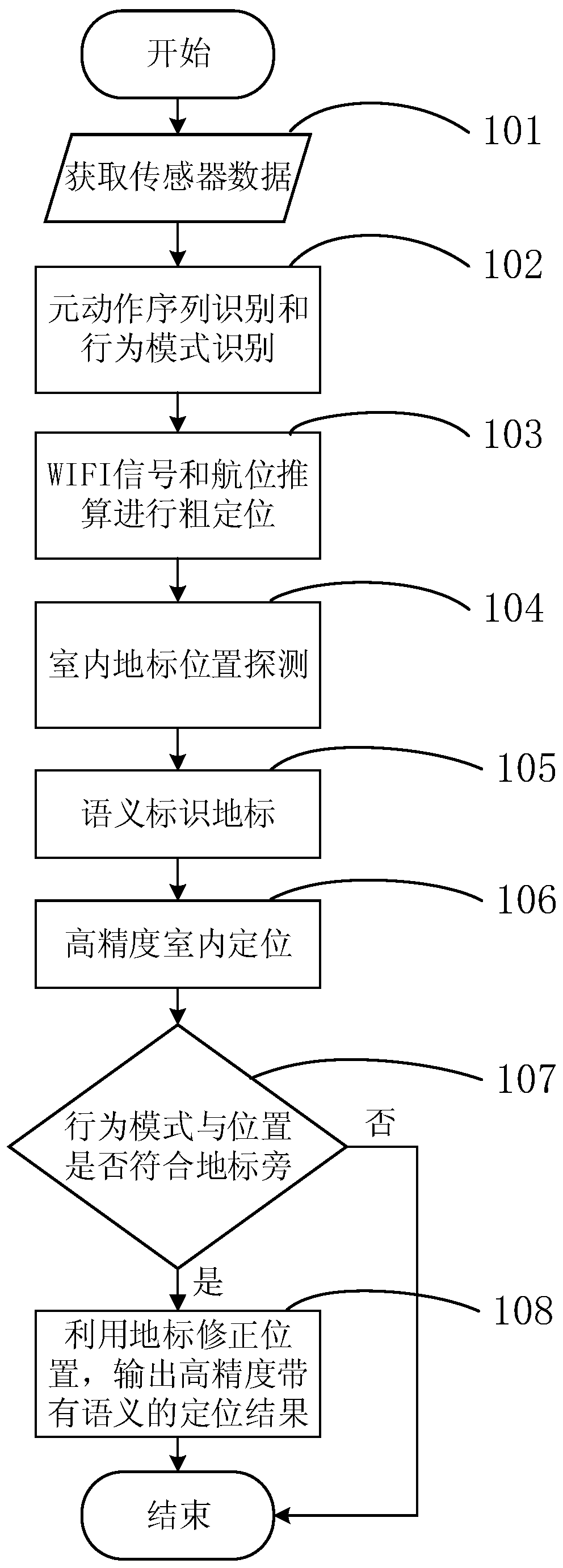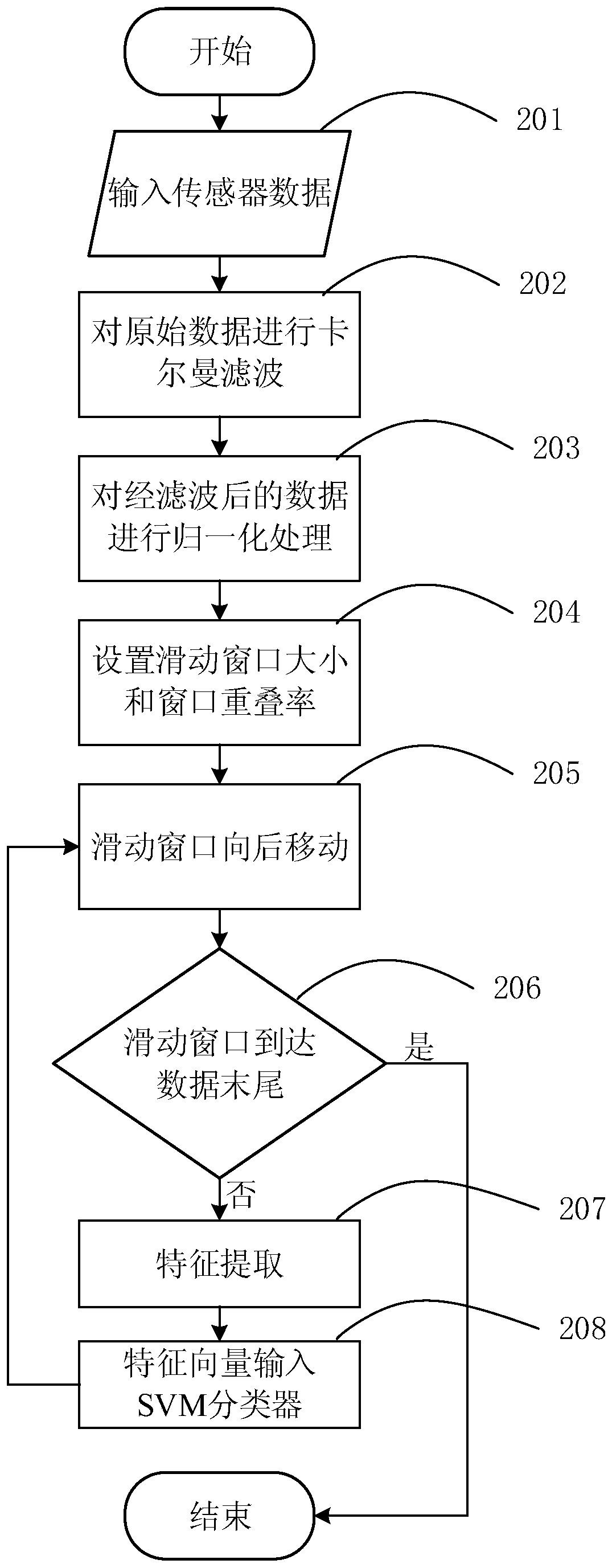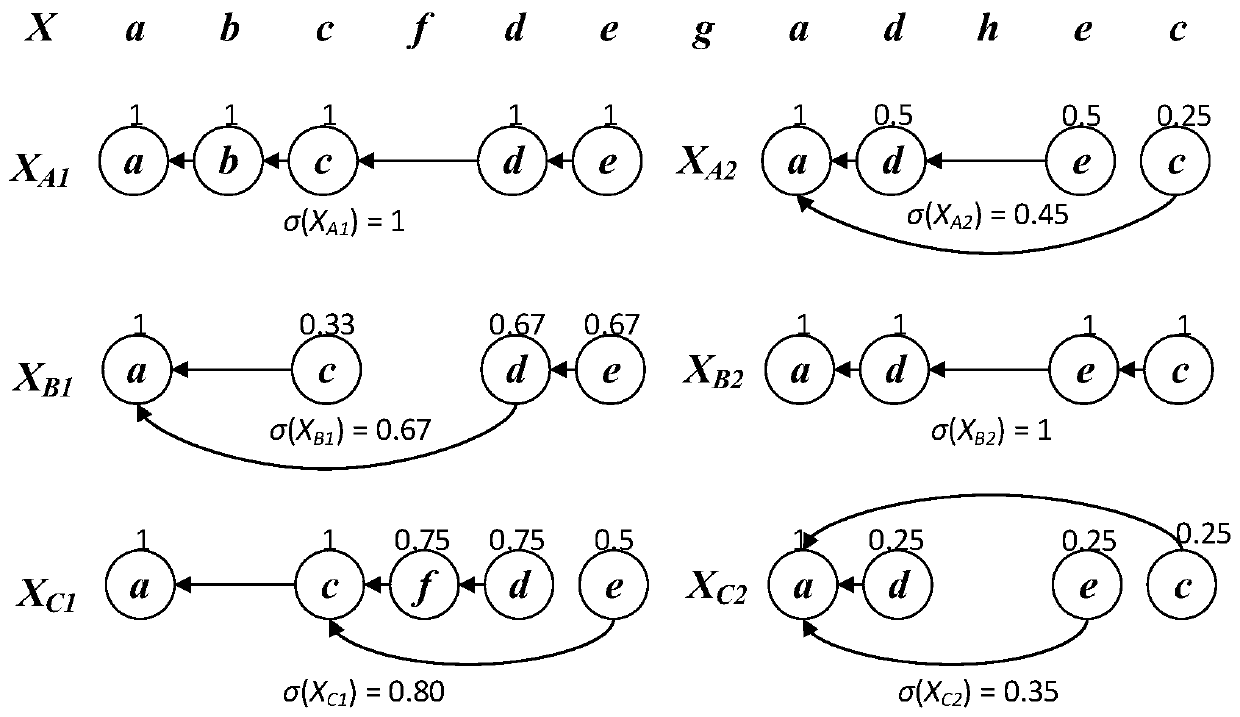A Behavior-Based Method for Indoor Localization and Landmark Semantic Identification
A technology of semantic identification and indoor positioning, which is applied in the directions of instruments, navigation, surveying and mapping, and navigation, etc. It can solve the problems of tedious calibration of radio frequency signals and the lack of fundamentally improving the accuracy of positioning.
- Summary
- Abstract
- Description
- Claims
- Application Information
AI Technical Summary
Problems solved by technology
Method used
Image
Examples
Embodiment Construction
[0058] The behavior-based indoor positioning and landmark semantic identification proposed by the present invention is a high-precision, stable indoor positioning and semantic identification scheme. figure 1 shows the overall workflow of indoor localization and semantic identification of landmarks, figure 2 shows the meta-action sequence recognition workflow, image 3 A schematic diagram of the principle of behavior pattern recognition is shown, Figure 4 shows the indoor landmark location detection workflow, Figure 5 It shows the schematic diagram of the principle of WIFI rough positioning and dead reckoning, Figure 6 shows the iterative update workflow for indoor landmark locations, Figure 7 The workflow for semantic identification of landmarks is shown.
[0059] In order to make the object, technical solution and beneficial effects of the present invention clearer, the present invention will be described in detail below in conjunction with the accompanying drawings....
PUM
 Login to View More
Login to View More Abstract
Description
Claims
Application Information
 Login to View More
Login to View More - R&D
- Intellectual Property
- Life Sciences
- Materials
- Tech Scout
- Unparalleled Data Quality
- Higher Quality Content
- 60% Fewer Hallucinations
Browse by: Latest US Patents, China's latest patents, Technical Efficacy Thesaurus, Application Domain, Technology Topic, Popular Technical Reports.
© 2025 PatSnap. All rights reserved.Legal|Privacy policy|Modern Slavery Act Transparency Statement|Sitemap|About US| Contact US: help@patsnap.com



